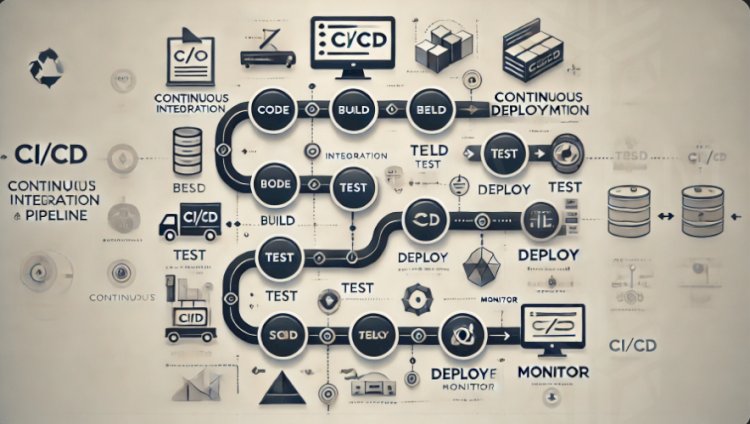Mastering CI/CD Pipelines: Revolutionizing Software Development and Deployment
Are you ready to embrace the future of software development with CI/CD pipelines? Start small, iterate fast, and watch your productivity soar.

In today's fast-paced tech world, delivering quality software quickly is critical. This is where Continuous Integration (CI) and Continuous Deployment (CD) pipelines come into play. They streamline the software development process, enhancing collaboration, reducing errors, and accelerating delivery. In this blog, we explore what CI/CD pipelines are, how they work, and why they’re essential for modern development teams.
What is a CI/CD Pipeline?
A CI/CD pipeline is a series of automated steps that developers use to deliver software. It begins with writing code and ends with the deployment of a fully functional application. The pipeline integrates automation, testing, and deployment, ensuring software changes are reliable and fast.
Key Stages of a CI/CD Pipeline
1. Source Code Management
- Developers push code to a version control system (e.g., Git).
- Changes trigger the pipeline, initiating the build process.
2. Continuous Integration (CI)
- The system automatically compiles the code to ensure it integrates with the existing codebase.
- Unit tests and static code analysis are run to catch errors early.
3. Continuous Testing
- Automated tests validate the functionality, performance, and security of the application.
- Testing ensures the code meets quality standards before deployment.
4. Continuous Delivery (CD)
- The application is built into deployable artifacts (e.g., Docker containers).
- Code is staged in a pre-production environment for further testing.
5. Continuous Deployment
- Once approved, the code is automatically deployed to production.
- Rollback mechanisms ensure quick recovery from any issues.
Benefits of CI/CD Pipelines
-
Faster Delivery
- Automating testing and deployment reduces time-to-market.
-
Improved Collaboration
- Teams work cohesively with real-time feedback on code changes.
-
Enhanced Quality
- Frequent testing catches bugs early in the development cycle.
-
Reliability
- Automated deployments minimize human error, ensuring consistent results.
Tools for Building CI/CD Pipelines
Here are some popular tools for implementing CI/CD pipelines:
- Jenkins: Open-source automation server.
- GitLab CI/CD: Integrated DevOps lifecycle tool.
- CircleCI: CI/CD service with powerful orchestration.
- Travis CI: Continuous integration for open-source and enterprise projects.
- AWS CodePipeline: Fully managed CI/CD service by Amazon Web Services.
Best Practices for CI/CD Pipelines
-
Automate Everything
From testing to deployment, aim for end-to-end automation. -
Keep Builds Fast
Optimize pipeline processes to avoid delays. -
Monitor and Log
Use tools like Grafana or ELK Stack for real-time monitoring and error logging. -
Secure the Pipeline
Implement security checks and ensure encrypted storage of secrets. -
Start Small and Scale
Begin with a minimal viable pipeline and enhance as your team grows.
Conclusion
The CI/CD pipeline is a game-changer in software development. It empowers teams to deliver high-quality applications faster, reduces manual effort, and fosters a culture of collaboration and continuous improvement. Whether you’re a startup or an enterprise, adopting CI/CD practices can significantly enhance your development and deployment workflows.

 Ashish Kumar
Ashish Kumar 













